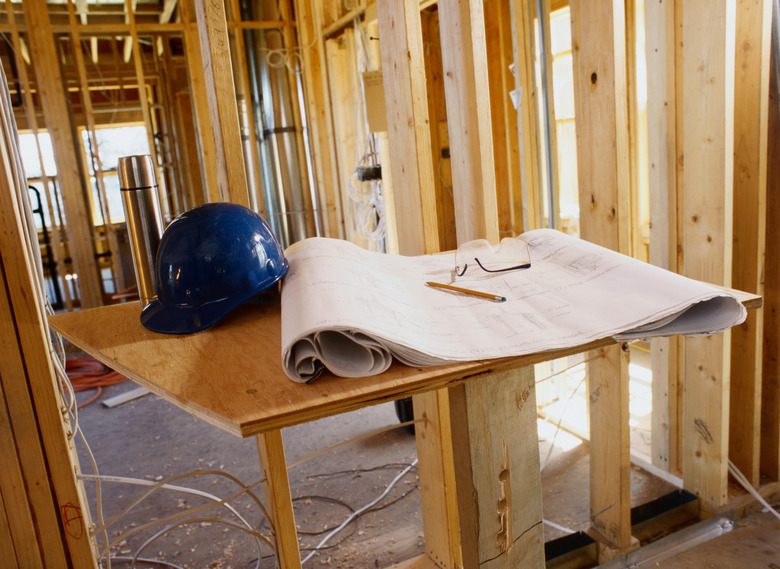What Do The Centrioles Do During Interphase?
What is a centriole anyway? Is it an organelle? Is it a structural protein? How does it relate to a centrosome?
Centrioles Definition
Centrioles Definition
Centrioles are paired micro-organelles located in the centrosome. Centrioles are formed from microtubules arranged in a linear, parallel fashion around a central open space to form a cylinder.
Centrioles are present in most eukaryotic cells. They assist in chromosome migration during mitosis but are not required for mitosis to occur. Centrioles are also present in cilia and flagella although they are organized in a slightly different arrangement.
Centrioles Structure
Centrioles Structure
A centriole is created from clusters of microtubules that form a cylinder. Each microtubule is composed of the proteins alpha and beta tubulin. Each cluster contains three microtubules. There are nine triplet clusters oriented in parallel that form the "wall" of the open-ended cylinder. Each cylinder is about 500 nm in length and 200 nm in diameter.
Centrioles in cilia and flagella are also arranged in a nine-cluster cylinder but each cluster contains only two microtubules.
Centriole pairs lay at right angles to each other within the centrosome. The centrioles are surrounded by an amorphous cloud containing more than 100 different proteins. This matrix of proteins is termed pericentriolar material (PCM). The PCM is not enclosed by a membrane.
Centrioles in Mitosis
Centrioles in Mitosis
Cells in mitosis have a centrosome containing two pairs of centrioles and the surrounding PCM. During mitosis, centrosomes migrate over the nuclear envelope to opposite poles. Microtubules grow out radially from each centrosome towards the opposite pole, forming the mitotic spindle.
During mitosis, some of these spindle fibers attach via centromeres to chromosomes lined up at the metaphase plate. The remaining unattached fibers will push the dividing cell apart during cytokinesis.
Centrioles Function During Interphase
Centrioles Function During Interphase
Interphase is the phase where cell growth and DNA synthesis occurs. This phase is distinct from and significantly longer than mitosis. Interphase is subdivided into the following three phases: G1, S and G2.
Organization of the PCM during interphase is conducted by a single layer of one of the PCM proteins called pericentrin. Pericentrin forms the scaffold of the matrix. One end of pericentrin binds to the microtubules of the centriole and the other end extends radially to interact with other matrix proteins.
Centrosomes again are composed of centrioles and the surrounding PCM. During interphase, a centrosome is also called a microtubule organizing center (MTOC).
During G1, the centrioles move slightly away from each other, where they will remain until mitosis begins. Centriole duplication initiates during late G1.
During the S or synthesis phase, the centrosome completes replication. Microtubules, or 'daughter' centrioles, form at right angles near each 'mother' centriole. This mode of replication is termed semi-conservative and is similar to how DNA is replicated during this phase.
The daughter centrioles grow in size during G2 phase, in preparation for cell division during mitosis. Growth includes recruitment of PCM by mother centrioles for spindle assembly.
Basal Bodies
Basal Bodies
Cilia and flagella are hair-like motile bodies responsible for movement in cells like sperm and the hair cells in the organ of Corti, found in the inner ear.
At the base of each cilium and flagellum, there is a single, unpaired centriole called a basal body. The centriole is also surrounded by PCM, and its microtubules are responsible for the movement of the cilium or flagellum.
Protein motor units in these microtubules are largely responsible for the movement and direction of the cilia and flagella. Basal bodies are also termed kinetosomes.
Centriolar Dysfunction and Cancer
Centriolar Dysfunction and Cancer
Cancer cells have an abnormally high number of centrosomes which is thought to be related to mutations in the p53 tumor suppression gene.
Two important chemotherapeutic drugs, Vincristine and paclitaxel, target microtubule assembly and depolymerization of microtubule in spindle fibers.
Cite This Article
MLA
Mends, Francine. "What Do The Centrioles Do During Interphase?" sciencing.com, https://www.sciencing.com/centrioles-during-interphase-18439/. 14 June 2019.
APA
Mends, Francine. (2019, June 14). What Do The Centrioles Do During Interphase?. sciencing.com. Retrieved from https://www.sciencing.com/centrioles-during-interphase-18439/
Chicago
Mends, Francine. What Do The Centrioles Do During Interphase? last modified August 30, 2022. https://www.sciencing.com/centrioles-during-interphase-18439/
